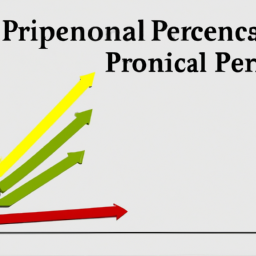
Financial Sector Performance: An Overview
The financial sector plays a crucial role in the overall economic development of a country. It encompasses various institutions, including banks, insurance companies, asset management firms, and stock exchanges, which facilitate the flow of funds and provide essential financial services to businesses and individuals.
Factors Affecting Financial Sector Performance
Several factors influence the performance of the financial sector. These include:
- Economic conditions: The overall health of the economy, including GDP growth, inflation rates, and employment levels, significantly impacts the performance of the financial sector. A robust economy generally leads to increased borrowing, investment, and financial activities.
- Regulatory environment: A well-regulated financial sector ensures stability, transparency, and consumer protection. Effective regulation and supervision by regulatory authorities are vital to maintain trust and confidence in the financial system.
- Technological advancements: The advent of technology has revolutionized the financial sector, leading to increased efficiency, accessibility, and innovation. Firms that embrace and adapt to technological advancements tend to outperform their competitors.
- Market sentiment: Investor confidence and market sentiment play a crucial role in the performance of financial markets. Positive sentiment encourages investment and trading activities, while negative sentiment can lead to market volatility and decreased performance.
Key Performance Indicators
Several key performance indicators (KPIs) are used to assess the financial sector’s performance. These indicators provide insights into the sector’s profitability, stability, and efficiency. Some common KPIs include:
- Return on Assets (ROA): ROA measures a financial institution’s ability to generate profits from its assets. A higher ROA indicates better performance and efficient asset utilization.
- Net Interest Margin (NIM): NIM measures the difference between interest income generated from loans and the interest paid on deposits. A higher NIM indicates better profitability for banks and other lending institutions.
- Loan-to-Deposit Ratio: This ratio reflects the proportion of a bank’s loans to its deposits. A higher ratio suggests that the bank is lending a significant portion of its deposits, potentially indicating increased business activity.
- Non-Performing Loans (NPL) Ratio: The NPL ratio measures the percentage of loans in a bank’s portfolio that are not being repaid on time. A lower NPL ratio indicates better asset quality and risk management.
Recent Trends and Challenges
The financial sector has witnessed significant trends and challenges in recent years:
- Digital Transformation: The rise of fintech companies and digital banking has transformed the financial sector. This shift towards digital platforms has improved customer experience, increased financial inclusion, and reduced operational costs.
- Increased Regulations: Following the 2008 global financial crisis, regulatory authorities have implemented stricter regulations to ensure financial stability and protect consumers. Compliance with these regulations has become a challenge for financial institutions.
- Cybersecurity Risks: As financial transactions increasingly occur online, the risk of cyber-attacks and data breaches has become a significant concern. Financial institutions must invest in robust cybersecurity measures to safeguard customer information and maintain trust.
- Changing Customer Expectations: Customers now demand personalized and convenient financial services. Traditional financial institutions must adapt to meet these expectations or risk losing market share to more agile and customer-centric fintech companies.
Conclusion
The performance of the financial sector is vital for economic growth and stability. Various factors, such as economic conditions, regulations, technology, and market sentiment, influence its performance. Monitoring key performance indicators and staying updated on emerging trends and challenges allows stakeholders to make informed decisions and drive the sector towards continued success.